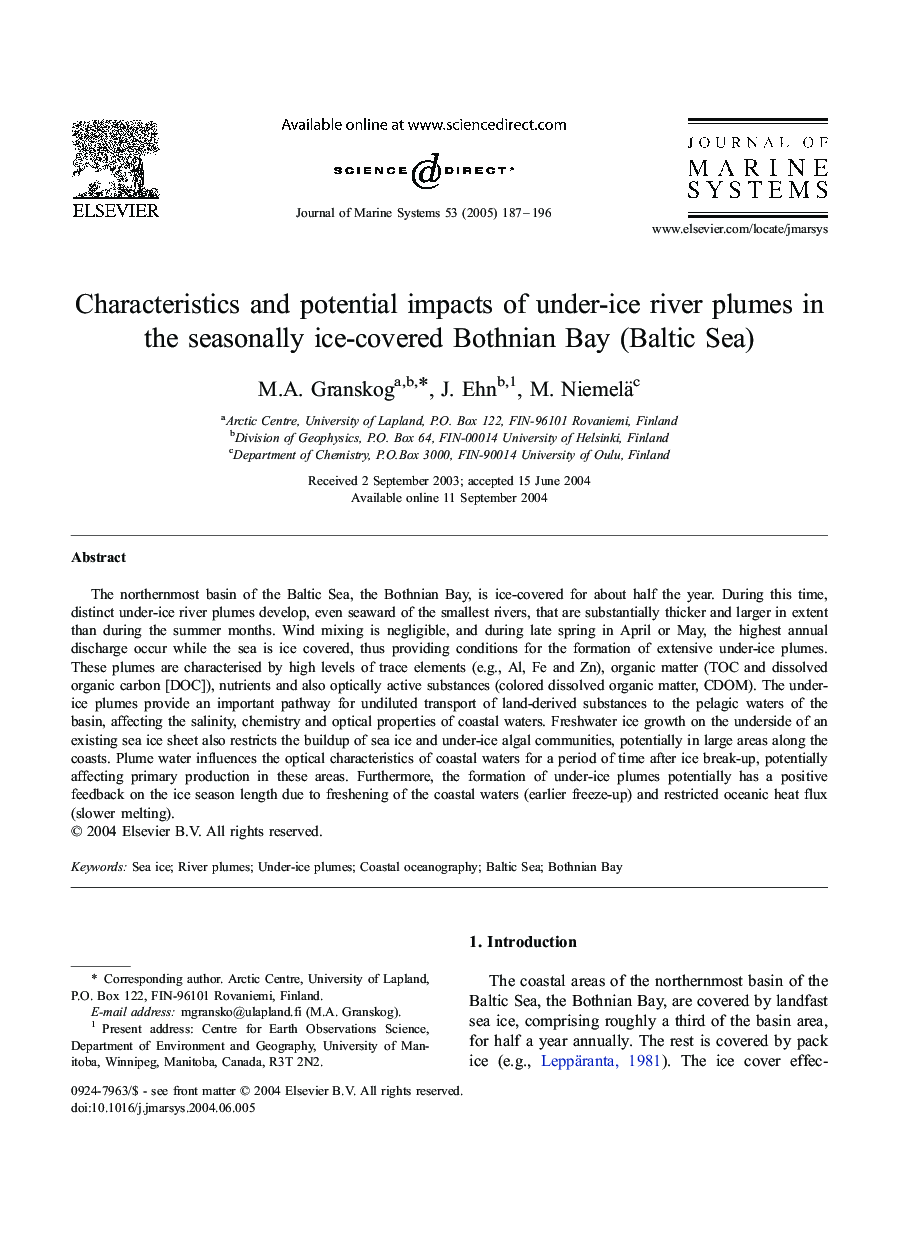| Article ID | Journal | Published Year | Pages | File Type |
|---|---|---|---|---|
| 9483582 | Journal of Marine Systems | 2005 | 10 Pages |
Abstract
The northernmost basin of the Baltic Sea, the Bothnian Bay, is ice-covered for about half the year. During this time, distinct under-ice river plumes develop, even seaward of the smallest rivers, that are substantially thicker and larger in extent than during the summer months. Wind mixing is negligible, and during late spring in April or May, the highest annual discharge occur while the sea is ice covered, thus providing conditions for the formation of extensive under-ice plumes. These plumes are characterised by high levels of trace elements (e.g., Al, Fe and Zn), organic matter (TOC and dissolved organic carbon [DOC]), nutrients and also optically active substances (colored dissolved organic matter, CDOM). The under-ice plumes provide an important pathway for undiluted transport of land-derived substances to the pelagic waters of the basin, affecting the salinity, chemistry and optical properties of coastal waters. Freshwater ice growth on the underside of an existing sea ice sheet also restricts the buildup of sea ice and under-ice algal communities, potentially in large areas along the coasts. Plume water influences the optical characteristics of coastal waters for a period of time after ice break-up, potentially affecting primary production in these areas. Furthermore, the formation of under-ice plumes potentially has a positive feedback on the ice season length due to freshening of the coastal waters (earlier freeze-up) and restricted oceanic heat flux (slower melting).
Related Topics
Physical Sciences and Engineering
Earth and Planetary Sciences
Oceanography
Authors
M.A. Granskog, J. Ehn, M. Niemelä,
